Flower power: Marcin Rusak wins the 2015 Perrier-Jouët Arts Salon prize
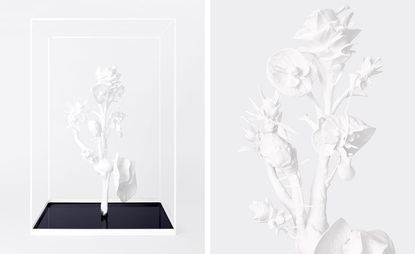
The work of London-based Polish designer Marcin Rusak treads a fine line between disposable commodity and art, a duality he explores through the use of flowers in sculpture, products and conceptual artworks.
His works gained the consensus of the Perrier-Jouët Arts Salon, a group of creative influencers who, since 2013, have gathered to explore and award the application of Art Nouveau principles in contemporary art and design. For this third year, the commission (which includes designer Tord Boontje, milliner Stephen Jones and artists such as Claire Brewster, Kate MccGwire and inaugural recipient Hitomi Hosono) considered a group of ten creatives, selecting Rusak’s work as the most fitting embodiment of the 19th century movement's heritage, with pieces inspired by natural forms and organic structures.
Rusak’s work, now on display at London’s Contemporary Applied Arts gallery, is a perfect interpretation of this heritage, combining an aesthetic exercise with a comment on industrial and technological advancements.
The show – entitled 'Inflorescence and Other Artefacts' – includes a number of his earlier pieces (initially presented during his Royal College of Art graduate show 'Flowering Transition' last year), and some new works, which further develop his research. Inspired by his family’s heritage of flower growing (an enterprise started in 1900), Rusak explored modern flower production, finding himself in the middle of a fully industrialised and engineered market. His response is a collection of pieces which play with and comment on the ephemeral and disposable nature of flowers.
The subsequent core of his exploration is 'Flower Monster', a hybrid creation engineered after extensive research in the Netherlands, where Rusak learned about the vast commercial market for flowers (a business which moves $40bn yearly, he explains). 'Flowers today are completely engineered,' he says. 'You can control colour, the size of their stem, whether they have leaves, the intensity of their scent.' 'Flower Monster' is a combination of the most 'marketable' elements, all worked into a three-dimensional print, of which he developed a translucent resin version for the exhibition.
Other chapters of his work include a textile printed with pollen and stained with the petals of discarded flowers collected from flower markets. 'We are often inspired by nature to create decorations, but rarely we use nature to actually make the decoration,' he says. His silk piece is intended to extend the life of the discarded flowers by a few months or years, by slowly fading as the pigments naturally dissolve.
A similarly transient project is his 'Perishable Vase' series, made of dried flowers bound with shellac, resin and beeswax, and fashioned into a traditional vase shape. 'These vases are a metaphor for objects we have in our lives which we know are not going to last, and that we don’t want to keep – but we are stuck with their materiality,' he explains, using iPhone cases and inkjet printers as examples. The newest vase, made for this commission, contains three-dimensional printed metal flowers, a permanent element juxtaposed with the degrading vessel. The idea is that when the vase decays, the metal flowers topple – a poetic reminiscence of what happens when the petals of a flower begin to break off.
The display also includes Rusak’s earlier 'Fragrance' collection: a series of distilled rose petal scents highlighting the differences in the smell of flowers from a supermarket, a florist and a garden. The fragrances are enclosed in cases made of resin and dried flowers, each depicting the intensity of the scent within.
Rusak's three-dimensional works are illustrated with etchings and prints of the 'Flower Monster', as well as vintage photos of his family’s flower business, which was shut before he was born but is still influential to his practice. 'I grew up in the reminiscence of this industry,' he recalls. 'I played in the empty glasshouses; those dry, intensely warm spaces were my playrooms. Even if the flowers weren’t there anymore, their history was still present.' These memories inspired him when looking at materials during his studies at the Royal College of Art (under the designers Philippe Malouin and Glithero's Sarah van Gameren), where he embellished them with further historical, technological and aesthetic research. Rusak also worked with a large network of people – plant geneticists, engineers, sculptors and engravers among them – all of whom contributed to bringing his works to life.
'Marcin’s works are truly representative of the Art Nouveau ethos [of Perrier-Joüet], which interpret the beauty of nature in a thoughtful and engaging way,' said Perrier-Joüet style director Axelle de Buffevent, recalling the iconic Belle Epoque anemone motif designed in 1902 by Emile Gallé – an inspiration for the champagne house for over a century.
Chosen as a next aesththetic chapter for the company, Rusak’s poetic approach to the mundane issues of waste and consumption add a truly meaningful layer to this enchanting visual history.
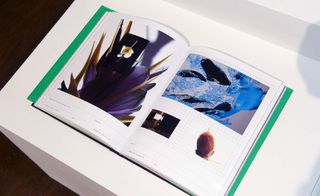
'Flower Monster' is at the core of Rusak's collection; it is a hybrid creation engineered after extensive research of the most marketable physical elements of a flower, amalgamating them in a scanned and printed sculpture
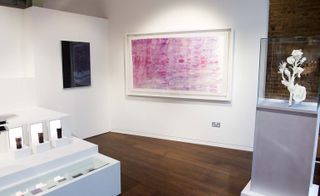
Rusak’s display at London’s Contemporary Applied Arts gallery is a perfect interpretation of the Art Nouveau heritage of the house of Perrier-Jouët, and combines an aesthetic exercise with a comment on industrial and technological advancements
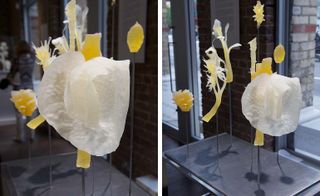
For the exhibition, he produced a new version of 'Flower Monster' in translucent resin, and presented its elements perched on metal sticks, to enhance the notion of scientific and technological research in its conception
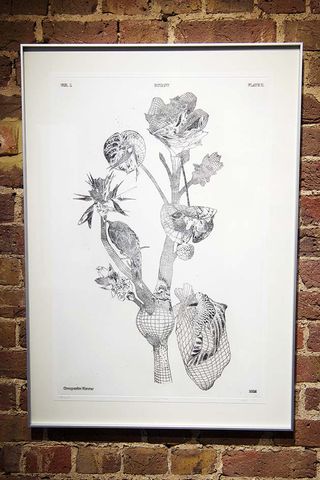
His three-dimensional works are illustrated with etchings and prints of the 'Flower Monster'
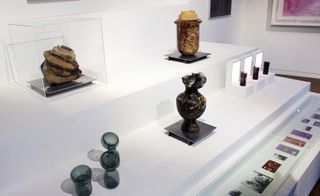
The show includes some of his earlier pieces (initially presented during the 2014 Royal College of Art graduate show), and some new works, which take his research further
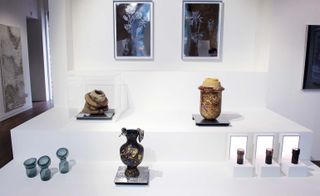
These 'Perishable Vases' are made of dried flowers bound with shellac, resin and beeswax and fashioned into a traditional vase shape
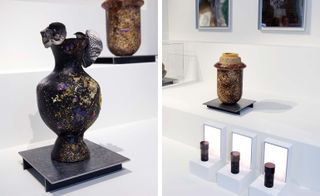
The newest vase in the series (pictured left) features three-dimensional printed metal flowers. The idea is that when the vase decays, the metal flowers topple – a poetic reminiscence of what happens when the petals of a flower begin to break off. Pictured right are his previous vases and the series of 'Fragrances' made for the Royal College of Art graduate show
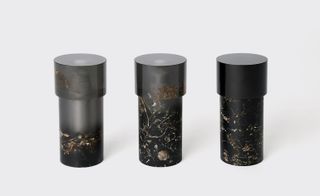
'Fragrances' is a series of distilled rose petal scents highlighting the differences in the smell of flowers from a supermarket, a florist and a garden. Photography courtesy of Perrier-Jouët

The fragrances are enclosed in cases made of resin and dried flowers, each depicting the intensity of the scent within. Photography courtesy of Perrier-Jouët
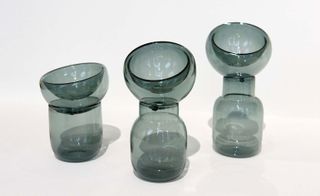
Working with a glassblower, Rusak also produced scent diffusers to preserve and share the smell of flowers
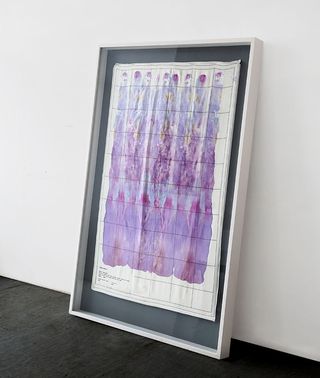
Other chapters of his work include a textile printed with pollen and stained with the petals of discarded flowers collected from flower markets. Photography courtesy of Perrier-Jouët
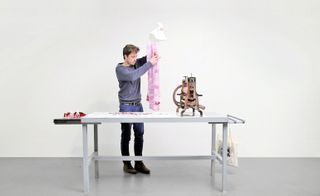
The silk is wrapped around the flowers and passed through a mangle. Photography courtesy of Perrier-Jouët
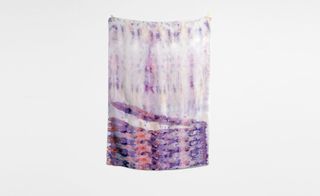
The printed silk piece is intended to extend the life of the discarded flowers by a few months or years, by slowly fading as the pigments naturally dissolve. Photography courtesy of Perrier-Jouët
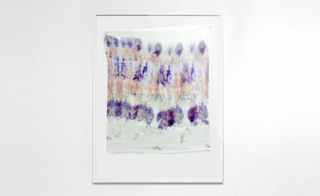
Another example of Rusak's flower prints on silk. Photography courtesy of Perrier-Jouët
ADDRESS
Contemporary Applied Arts
89 Southwark Street
London, SE1 0HX
SE1 0HX
Wallpaper* Newsletter
Receive our daily digest of inspiration, escapism and design stories from around the world direct to your inbox
Rosa Bertoli was born in Udine, Italy, and now lives in London. Since 2014, she has been the Design Editor of Wallpaper*, where she oversees design content for the print and online editions, as well as special editorial projects. Through her role at Wallpaper*, she has written extensively about all areas of design. Rosa has been speaker and moderator for various design talks and conferences including London Craft Week, Maison & Objet, The Italian Cultural Institute (London), Clippings, Zaha Hadid Design, Kartell and Frieze Art Fair. Rosa has been on judging panels for the Chart Architecture Award, the Dutch Design Awards and the DesignGuild Marks. She has written for numerous English and Italian language publications, and worked as a content and communication consultant for fashion and design brands.
-
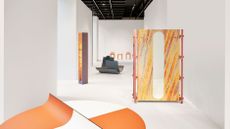 Fenix and Federica Sala Challenge Designers to double up
Fenix and Federica Sala Challenge Designers to double upCurator Federica Sala and innovative interiors material brand Fenix's Design Duo Double Feature project brings three design duos together to create dual-purpose furniture
By Ifeoluwa Adedeji Published
-
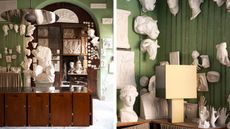 Interni Venosta is a new furniture brand by the Dimorestudio founders
Interni Venosta is a new furniture brand by the Dimorestudio foundersLaunched at Milan Design Week 2024, Interni Venosta is Dimorestudio Britt Moran and Emiliano Salci's new brand, crafted by Tuscan manufacturer Fabbri Services and paying homage to 1970s Italian design
By Rosa Bertoli Published
-
 Gucci’s ‘Design Ancora’ reimagines furniture classics in rich red
Gucci’s ‘Design Ancora’ reimagines furniture classics in rich redGucci launches new editions of Italian design icons in an alluring deep red, showcased during Milan Design Week 2024
By Simon Mills Published
-
 Tanabe Chikuunsai IV wraps Casa Loewe Barcelona in 6,000 strips of tiger bamboo
Tanabe Chikuunsai IV wraps Casa Loewe Barcelona in 6,000 strips of tiger bambooInside the newly revamped Casa Loewe Barcelona, Japanese artist Tanabe Chikuunsai IV reflects on family traditions and environmental destruction with a staggering bamboo installation
By Malaika Byng Last updated
-
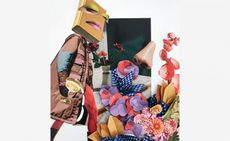 Learn the art of paper crafting with ‘slow artist’ Alice von Maltzahn
Learn the art of paper crafting with ‘slow artist’ Alice von MaltzahnThe Sarabande Foundation’s artist-in-residence will lead a free virtual workshop on paper crafting and collage techniques on 23 February 2021
By Harriet Lloyd Smith Last updated
-
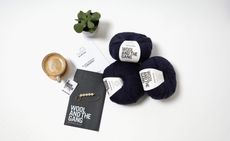 Get your mitts on these DIY knitting kits
Get your mitts on these DIY knitting kitsCrank up your crafting output with these DIY knitting kits. Ready, steady, stitch!
By Laura Hawkins Last updated
-
 Japanese design inspirations are at the heart of London gallery SoShiro’s debut exhibition
Japanese design inspirations are at the heart of London gallery SoShiro’s debut exhibitionBy Rosa Bertoli Last updated
-
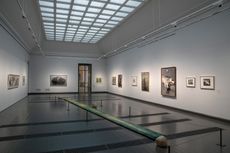 A Helsinki exhibition explores the artistic synergy between the Nordics and East Asia
A Helsinki exhibition explores the artistic synergy between the Nordics and East AsiaAteneum museum is marking the centenary of diplomatic relations between Finland and Japan with a quietly beautiful display of ceramics, paintings, sculptures and textiles
By Minako Norimatsu Last updated
-
 Hauser & Wirth host rural British craft in a new show at Make Gallery
Hauser & Wirth host rural British craft in a new show at Make GalleryBy Emma O'Kelly Last updated
-
 Dream weaver: artist Liza Lou on the teamwork behind her beadwork
Dream weaver: artist Liza Lou on the teamwork behind her beadworkBy Janelle Zara Last updated
-
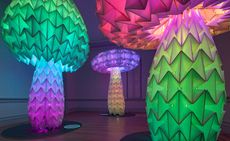 How the art of Burning Man ignited a cultural movement beyond the desert
How the art of Burning Man ignited a cultural movement beyond the desertBy Jessica Klingelfuss Last updated